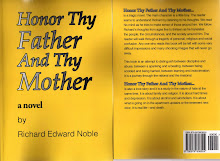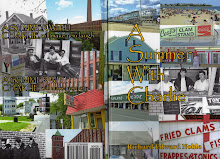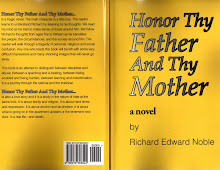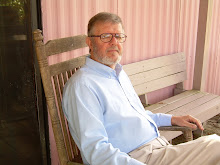Labor Day
Haymarket Riot of 1886
By Richard E. Noble
Labor Day for most Americans is the celebration of the End of Summer – that last week-end for fun and games. I would imagine that many other folks in the U.S. are of the impression that Labor Day has something to do with motherhood. It is only in the United States - in the land of “Business is our Business” – that this particular celebration is ignored and its political and historical significance forgotten and some might even say maligned. Contrary to popular opinion the United States fought no foreign war for the “Right to Free Speech”. This particular right was earned here in the streets of Chicago and in the mines of Colorado, Wyoming, Idaho and Utah. It was won by the blood of Labor heroes – symbolized by that horrid Red Flag (blood) - and later by social activists (men, woman, and children) who were beat, clubbed and fire hosed in almost every instance in the state’s attempt to stop them from “speaking freely”. Labor Day – celebrated in the rest of the world on May 1st – is actually a day that has been put aside to remember a labor riot that took place in 1886 right here in the good old United States of America. Who would have believed it?
Chicago – Haymarket Square – 1886
What happened in Haymarket Square in Chicago in 1886 and the eighteen month controversy that followed, should be as commonly known to the general American public as the witch trials in Salem and the McCarthy hearings of the 1950’s.
August Spies, Albert Parsons, Sam Fielden, Adolf Fischer, George Engel, Michael Schwab, Louis Lingg, and Oscar Neebe were all arrested and charged with murder. The prosecution charged them with being involved in a conspiracy to incite a riot which culminated in the death of seven policemen and several citizens. On November 11, 1887Spies, Engel, Fischer and Parsons were hung. Governor Oglesby had commuted the sentences of Schwab and Fielden to life imprisonment via their personal request and public apology. Those who were executed said that they were innocent of all charges and would not accept less than liberty and exoneration. Louis Lingg committed suicide. Oscar Neebe was given fifteen years. The men were all found guilty, based not on any direct evidence but on previous writings and public statements and comments. In effect, seven men were sentenced to death for speaking and writing their opinions and ideas in and unpleasant and admittedly aggressive and belligerent manner.
They were avowed and admitted anarchists. An anarchist believed in the organized overthrow of what they considered to be a “classist” society and world. Like our Revolutionary forefathers before them, they did not eliminate violence as one of the possible tools which could be used in this theoretical revolution.
It has been accepted and confirmed in all the history books that I have read thus far, that the trial of these men was a farce. It was totally corrupted and illegal. The jury was hand picked, summoned by a special bailiff instead of by random selection. Witnesses for the prosecution were bribed, bought or willingly lied under oath. Witnesses for the defense were intimidated, threatened, offered bribes, even kidnapped and hidden away until the completion of the trial. Police officers falsified their testimony. Only three of the defendants could even be proved to have been at the assembly. Furthermore, the riot was not a riot until 180 trained, riot squad, armed policemen disobeyed direct orders from the mayor and proceeded to inflame and incite the crowd.
Chicago had been a “hot” town for labor riots and social discontent for over a decade. Before the Haymarket Square Riot at the McCormick Harvester Company, there had been a lockout. McCormick had called in the police, brought in Pinks (Pinkertons), hired scabs, strike breakers and agitators.
Discharged workers and locked out union members gathered outside of the plant a few days later for a protest rally. Mr. McCormick decided to call the local police under Captain John Bonfield, a substantiated and demonstrated violent union opponent, to come out and supervise the affair. At the same time McCormick decided to close down his plant for the afternoon, and announce a new, shorter, eight hour day to his recently hired scab employees. The men outside were fired and replaced by these scabs because they had petitioned Mr. McCormick for just such an eight hour day a few days before. When the scabs, the pinks, and McCormick’s hired thugs exited the gates to the plant, violence erupted. A half dozen, unarmed strikers were killed and several others were injured and maimed in the melee.
[It is interesting to note that Mr. McCormick was not arrested at this point for being a part of a conspiracy to incite a riot which ended in the death of several human beings - which was the traditional practice for union leaders involved in similar social disasters and would be the fate of the union leaders in just a few days at Haymarket Square.]
In response to this provocation and slaughter, the union wrote up and dispensed pamphlets calling for another rally - this time at Haymarket Square. Its members were advised to come prepared for violence.
Mayor Carter H. Harrison attended the meeting to monitor any problems. Later that evening as rain began to fall, and anticipating no trouble, he left. At the trial, he subsequently testified that everything was peaceful. Even the radical speakers he felt to be non-threatening - their speeches “tame.” The speakers were concerned with union recruitment, and potential future benefits. No one was being encouraged to riot or engage in violence. He stopped by the police station and told Captain Bonfield to dismiss the riot squad, no action was necessary. Bonfield disregarded the mayor’s orders and sent 180 riot squad policemen over to the area with orders to dismiss the crowd of trouble makers.
The relatively small crowd was already dissipating due to the weather and the late hour. The riot squad proceeded to the speaker’s podium and began their unwarranted, unnecessary and un-called for dismissing tactics when a bomb was exploded within their ranks. A Sergeant M. J. Degan was killed instantly, and six other officers were seriously injured and died later in the hospital. The Union was, of course, blamed for this act of individual violence - even though it was well known that management had a long record of sabotage, violence, and even tossing bombs, burning their own factories, railroad cars, and “insured” business assets. Management violence, since substantiated historically, was a common tool used to discredit and turn public opinion against union activism. But, in this instance, though unproved, and unsubstantiated, the Union was advanced as the culprit. None of the indicted defendants could be traced to the bombing. The actual bomber was never discovered. The trial garnered publicity from all over the country and around the world. America was divided. Teddy Roosevelt expressed in a personal letter that he wished that he and some of his boys with their rifles could get to these radical troublemakers. Samuel Gompers, not a supporter of union violence, condemned the strike but asked for the release of the accused. All over the world advocates for both sides were speaking out on the controversy.
No one doubted that a meeting had taken place. But the right to engage in lawful assembly was guaranteed by the Constitution, as the right of a free people. No one doubted that a bomb had been thrown. No one doubted that seven policemen were now dead because of it. But a good many doubted that the men currently under indictment were responsible. Nearly everyone who knew the facts agreed that there was no evidence to convict these particular men of any crime. Any nut cake could have thrown the bomb, non union or pro-union; management, strike breaker, hired thug or Pinkerton. But the business community and an outraged general public wanted somebody hung. They wanted somebody hung as an example that this type of behavior could not be condoned in the United States of America. This was America, the land of opportunity, the nation of immigrants. This was the land of the free and the home of the brave. This was the country that people escaped to, not escaped from. The German, Polish, ungrateful, new-comer, immigrant bomb-throwing radicals needed to be taught a lesson. Not here ... not in this country could such behavior be tolerated.
The convicted men were inspirational and courageous at their trial and the subsequent hanging. Spies gave a speech at the trial that would have made Patrick Henry, Tom Paine and John Adams sit up and take notice. In it, he invoked the spirits of Socrates, Jesus Christ, Giordano Bruno, Huss and Galileo. He quoted Venetian Doge Faberi … “My defense is your accusation; the cause of my alleged crime your history.” He condemned the State’s contemplated murder of eight men whose only crime had been to speak the truth. He named names; he accused his accusers. He exposed their lies, their bribes and their misrepresentations.
Albert Parsons had initially escaped, but nevertheless turned himself in, knowing that he would be murdered, or executed. He did so because he would not let his courageous and falsely accused friends stand alone. Oscar Neebe, who was only sentenced to fifteen years, requested the court to hang him also. He would rather be a dead martyr than an innocent man condemned to prison.
Fischer said; “I was tried in this room for murder and convicted of anarchy ... this verdict is a death-blow against free speech, free press and free thought ... A new petition for clemency was brought to Governor John Peter Altgeld in 1893.
On June 26, 1893 Samuel Fielden, Oscar Neebe and Michael Schwab were given an absolute pardon.
The Governor explained his reasons in writing.
He stated that the jury had been selected inappropriately. Instead of the names being drawn from a hat, across class structures, a special bailiff had been appointed, Henry L. Ryce. Mister Ryce had stated his prejudices against the defendants openly. Ryce boasted that these men would be hung. Otis S. Favor, a potential juror and friend to Mister Ryce, filed a voluntary, unsolicited affidavit stating the truth and fact of Mister Ryce’s unabashed and vocal prejudices against the defendants. Ryce had told potential jurors that it was his intention to provide a continuous supply of prejudiced jurors to use up the defense’s challenges and guarantee a panel of jurors prone to convict. The defense appealed to the court when they realized that all the potential jurors were hand picked for their prejudice and non labor status in the community. The judge denied the appeal. The jurors own answers to pretrial questioning provided witness to the fact that they were incompetent due to their personal prejudice.
Next, Governor Altgeld pointed out that the defendants had not been proven guilty of the crime charged in the indictment. They had been charged with the murder of patrolman Mathias Degan. Many of the defendants were not even present at the scene of the murder. No evidence was brought against the defendants proving any involvement in the crime. The defendants were convicted on their previous published anarchist’s literature. In some of this literature revolution and or violence was approved or advocated. Governor Altgeld further stated that if violence was the cause of Patrolman Degan’s death it was the uncalled for violence of Captain Bonfield who had his men attack a group of peaceful citizens who had assembled in a vacant lot to discuss their options. Captain Bonfield attacked this group on May 1 (traditional date of Labor Day celebrations). The union men not only dispersed as requested; they began running for their lives. Bonfield’s men shot a number of these men in the back as they ran. Four were killed and several were injured. If men could be convicted of murder for writing about violence, certainly men who created violence – Captain Bonfield and associates - and openly precipitated hatred and revenge in the hearts of the innocent, could be convicted with much greater justification.
Captain Ebersold, Chicago chief of police at the time of the Haymarket Riot, further condemned the actions of others in the police establishment of inciting the riot and seeking to cause more and additional trouble even after the bomb had been thrown on the fourth of May. A Captain Schaak, Ebersold claimed, wanted to plant more bombs and stimulate more violence - his motivation being notoriety, personal ambition and fame.
Neebe, shouldn’t even have been put in jail in the first place, according to Atgeld. Even the prosecution admitted, at the trial and in front of the jury, that they had insufficient evidence to convict Neebe. And on top of all of this, said Altgeld, the judge himself, was prejudiced. He allowed inadmissible evidence and testimony for the prosecution while denying necessary and pertinent information from the defense. Even the judge’s remarks were picked up on by the prosecution and used to sway the jury.*
The story of these men is a story of heroic proportions. In a time of flagrant social, injustice, they stood up with their lives. These men were true American heroes fighting for the rights and the dignity of their fellow men within the American structure. These are the men that have earned their fellow working men much of what every working man thinks, today, to be his birthright. The hanging of these men stands as a dishonor to our system. Of course, it was not the first such dishonor, and it would not be the last.*
* “The Annals of America, Vol. 11, page 117, August Spies: Address at the Haymarket Trial.
*The Annals of America Vol. 11, pp. 43 8-444. John Peter Altgeld: Reasons for Pardoning the Haymarket Rioters.
*Works used in this essay include; “Roughneck”, Peter Carlson; “The History of American Labor”, Joseph G. Rayback; “The Annals of America Vol.11, 1884-1894; “Recent American History”, Lester Shippee; “The Rise Of Industrial America”, Page Smith; “Attorney for the Damned” – Clarence Darrow in the Courtroom – edited by Arthur Weinberg; “American Economic History” 6th edition, Harold Underwood Faulkner.
Subscribe to:
Post Comments (Atom)







































No comments:
Post a Comment